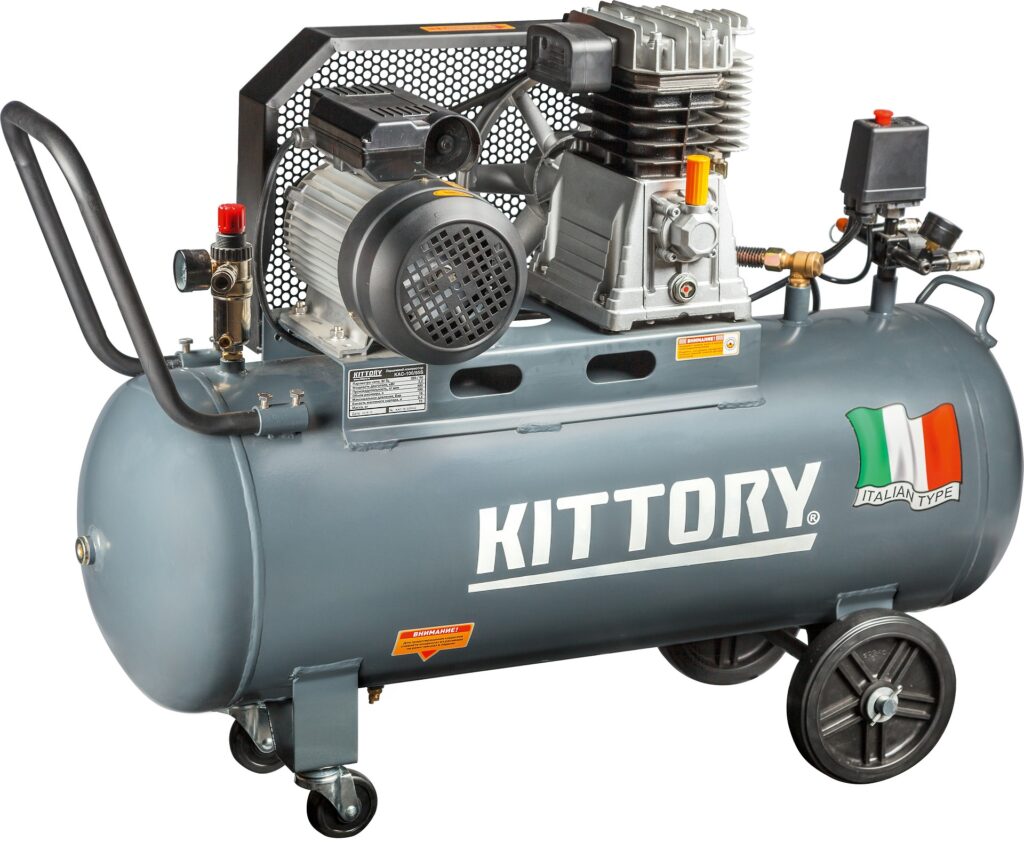Power tools
Harnessing the Power of Air Compressors

The air compressor is a jack-of-all-trades.
In the vast world of DIY, tools are paramount, and knowing how to utilize them can turn a novice into a master craftsman. One such powerhouse is the air compressor, often undervalued, but a cornerstone in many DIY project arsenals. This article delves into the essence of air compressors, exploring their working principle, various types, and their versatile applications in DIY projects.
Understanding Air Compressors
At its core, an air compressor is a device that converts power into potential energy stored in pressurized air (i.e., compressed air). Through various methods, an air compressor forces more and more air into a storage tank, increasing the pressure. When the tank’s pressure reaches its engineered upper limit, the compressor shuts off. The stored, pressurized air is held in the tank until called into use for a myriad of applications, released through a force that can power all kinds of tools.
Types of Air Compressors
Air compressors come in various shapes, sizes, and power grades, and choosing the right one depends on your DIY needs. They are primarily classified into two types based on their operation methods: positive displacement and dynamic (centrifugal).
Positive Displacement Compressors: These compressors draw in a specific amount of air and confine it in a closed space. The space is then reduced, compressing the air. Reciprocating (piston type) and rotary screw compressors are common examples. They are perfect for simple, at-home DIY tasks due to their efficiency at high pressures and smaller volumes.
Dynamic Compressors: Utilizing high-speed rotating blades, dynamic compressors accelerate the air, then decelerate it, the process of which creates a pressure increase. These are more suited for industrial applications due to their capacity for large volumes of air, though portable versions have been adapted for home use.
For most DIY enthusiasts, a portable or single-stage piston compressor is sufficient, balancing between affordability, portability, and power. It’s essential to select a compressor with the correct pressure (PSI) and volume (CFM) ratings, ensuring it can handle the requirements of your tools.
Applications of Air Compressors in DIY Projects
Air compressors are the unsung heroes in DIY circles, primarily due to their versatility. Here are several applications where they come in handy:
Powering Air Tools: Perhaps the most significant advantage of using air compressors is the ability to run pneumatic tools. These tools are often lighter, faster, more durable, and more powerful than their electric counterparts. They’re used in everything from auto repair with impact wrenches, building furniture with nail guns, to detailed carpentry using air-powered sanders.
Paint Spraying: For those who love a flawless, professional finish on their projects, whether repainting a car, finishing furniture, or painting walls, traditional brushes and rollers can’t compete with paint sprayers powered by air compressors. They ensure an even coat, faster application, and a smoother finish.
Cleaning with Compressed Air: Compressed air is a powerful cleaning force. You can use it to blast away dirt and debris from hard-to-reach places or clean off tools and workspaces. It’s especially useful in dusting off electronics or clearing wood shavings in a workshop.
Inflation Tasks: From inflating tires to sports equipment and even pool inflatables, an air compressor is your go-to. With the right attachments, what could be a tedious task becomes quick and effortless.
Creating Snow: A fun and unique DIY project is making snow. With a simple attachment, your air compressor can be used to create a winter wonderland in your yard, regardless of the actual weather conditions.
Sandblasting: For more advanced DIYers, an air compressor-powered sandblaster can be indispensable. You can strip rust, old paint, or other finishes off materials in preparation for painting or refinishing.
Home Maintenance: Small tasks like sealing windows and doors, powering hydraulic jacks to adjust or level heavy objects, or even powering a home sprinkler system, can be easily handled with your compressor.
Safety and Maintenance Tips
As with all power equipment, safety and maintenance are critical with air compressors. Regularly check and change the oil (for oil-lubricated models), check hoses for wear and tear, drain any moisture from the tanks, and change the air filter as needed. Always wear appropriate safety gear like goggles and ear protection when operating air compressors and pneumatic tools.
In terms of safety, ensure you’re aware of the noise levels while operating compressors, as prolonged exposure may lead to hearing issues. Also, understanding the correct PSI (pressure per square inch) necessary for each tool and task can prevent accidents and tool damage.
Conclusion
Investing in a good-quality air compressor can significantly broaden the spectrum of projects you can undertake. It not only simplifies tasks but, with the right care, is a partner in creation that will last for years. Whether you’re a seasoned DIY enthusiast or just starting, the air compressor’s adaptability, efficiency, and power are unmatched. Embrace the world of pneumatic tools and elevate your DIY game to professional levels.
More reading
11 Essential Hand Tools For DIY Beginners